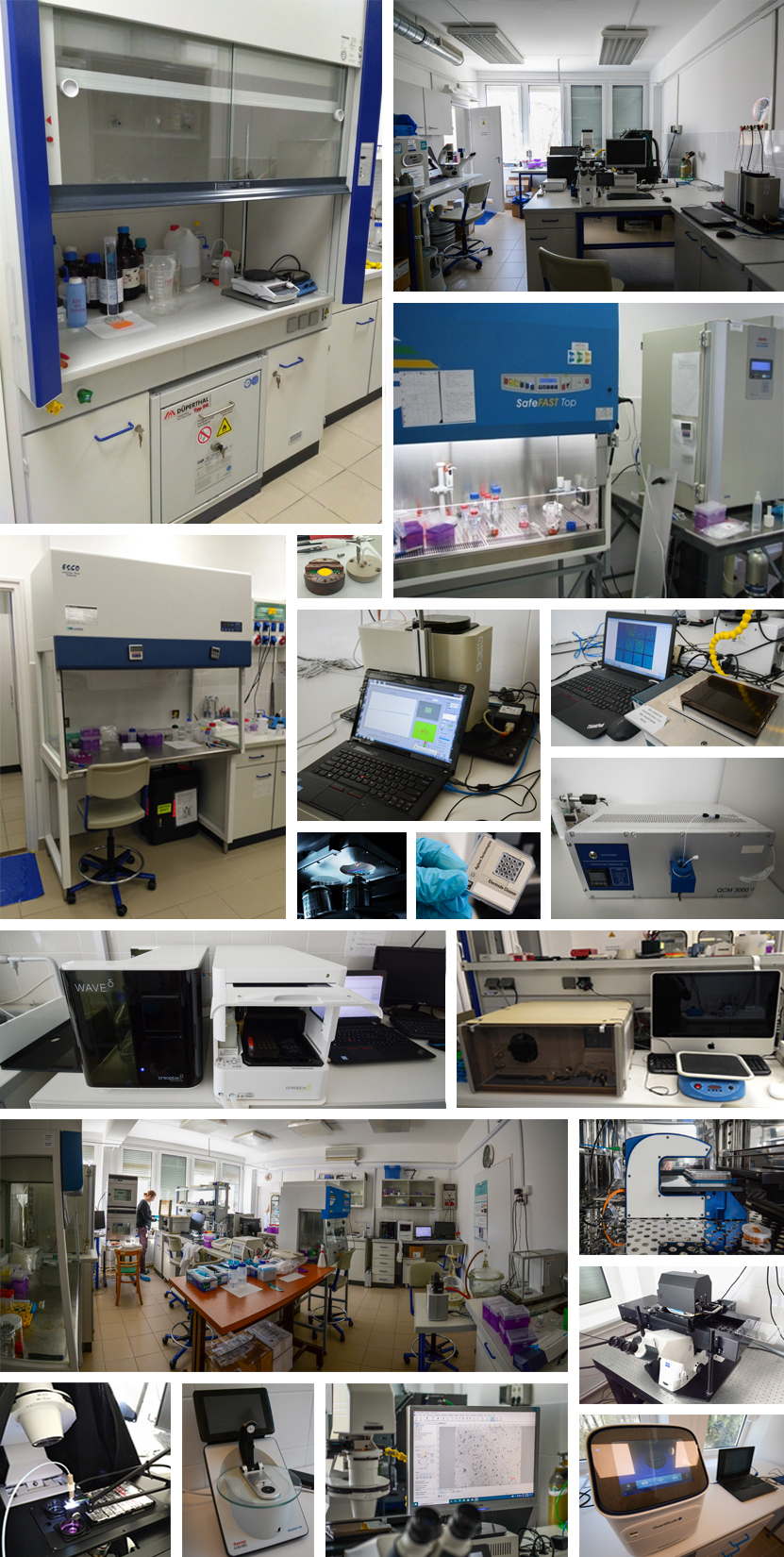The Nanobiosensorics Laboratory focuses on the development and application of label-free optical biosensors for proteins and living cells. In collaboration with a Swiss startup, Creoptix AG, we have developed Grating-Coupled Interferometry, a label-free optical biosensor with leading sensitivity capable of monitoring the real-time binding kinetics of ions to proteins. We employ microplate-based optical methods (resonant waveguide gratings) and novel imaging techniques (quantitative phase imaging) to characterize cellular adhesion on various surfaces and under stimuli. These techniques enable us to monitor cellular events such as adhesion, invasion, migration at both the single-cell and population levels, allowing us to identify and characterize subpopulations with distinct characteristics.
Another research focus is centered around single-cell manipulation, including adhesion measurements on individual cells and the isolation of both adhering and suspended cells for biomolecular characterization. We use robotic fluidic force microscopy (FluidFM) and computer-controlled micropipettes in close collaboration with industry (Cytosurge AG (CH) and Cellsorter Inc. (HU)). With robotic FluidFM, we are capable of injecting various materials, including metal nanoparticles and vesicles, into individual cells with a high degree of precision. Additionally, it is possible to take tiny cytoplasmic biopsies without killing the sampled cells. The combination of microplate-based optical sensors and robotic FluidFM has allowed us to calibrate the biosensor signals to adhesion force and has paved the way for single-cell adhesion kinetic measurements with unprecedented throughput and sensitivity.
When considering cancer, the group first established a methodology to determine the integrin receptor-RGD ligand affinity constant and kinetic rates in living cells without the need for labeling. Similarly, the laboratory discovered that the glycocalyx layer of cancer cells plays a regulatory role. It is possible to both weaken and strengthen adhesion by adjusting the composition of the glycocalyx. Our results have the potential for further applications in biotechnology, medical diagnostics, and basic biological research.


